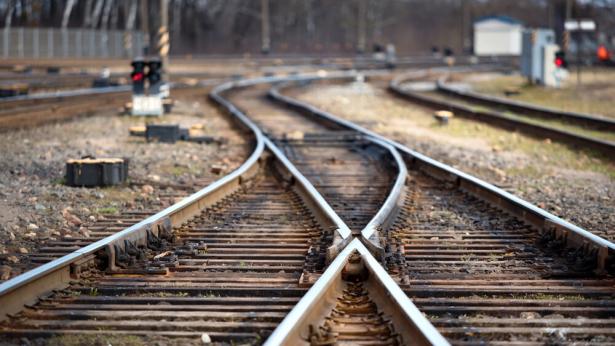Railroads are a crucial part of our nation’s infrastructure. Nearly every sector of our economy depends on goods shipped by the railroads, which haul forty percent of all long-distance freight in the U.S., measured by ton-miles. A third of all exports travel by rail. Furthermore, the greater fuel efficiency of using rail to move both people and freight means that moving more of our transportation onto the railroads will be necessary to address the existential threat of climate change.
Yet the private owners of our nation’s Class 1 railroads have shown themselves utterly incapable of facing the challenge of the climate crisis, dealing fairly with their own workers, or even meeting the most basic needs of their customers. The railroad companies cannot even be said to be in the business of moving freight; they are merely in the business of using their monopoly control over the nation’s rail infrastructure to squeeze as much profit as possible from customers and workers at the behest of their Wall Street shareholders.
Therefore, we demand that Congress immediately begin a process of bringing our nation’s railroads under public ownership. Public ownership of part or all of their rail systems has allowed many other countries to create rail systems that can move people and goods quickly, affordably, and in an environmentally sound way. With public ownership, governments can take the long view and make crucial infrastructure investments — and prevent price-gouging.
Railroads are, like utilities, “natural monopolies.” The consolidation of the Class 1 railroads in the U.S. into five massive companies over the past several decades has made it clear that there is no “free market” in rail transportation. With most customers having no other choice, and no central authority mandating long-term planning, each individual railroad company has little incentive to make investments in infrastructure and every temptation to take as much of their income as possible as profits. Even Martin Oberman, chair of the Surface Transportation Board, the federal agency that regulates rail, has called the railroads “monopolists” who are cutting services and raising prices because “that’s the easiest way for them to get rich.”
In their endless thirst for profit, the railroads have implemented a system called “precision scheduled railroading,” which simply means operating with as few staff as possible — speed-up by another name. Shippers have been complaining about the resulting poor service for years, and during the pandemic our entire economy paid the price with snarled supply lines leading to shortages and price hikes. The railroads do not even seem interested in expanding their share of the freight market, instead seeking to extract more and more short-term profit out of customers for whom rail is the only feasible way to ship their products.
The effect on railroad workers has been even more severe. In order to implement precision scheduled railroading, the companies have imposed draconian attendance policies which make it virtually impossible for railroad workers to take any time off, even for medical reasons. This intolerable state of affairs almost led to a railroad strike at the end of last year, until President Biden and Congress — clearly willing to intervene in the “market” when workers threaten to withdraw their labor — imposed a contract on the workers that did not even contain the workers’ bottom-line demand of adequate sick leave.
It is not only shippers and railroad workers who suffer from railroad company greed, but communities which have the misfortune of being located near tracks and rail yards. Every year, motorists are killed at railroad intersections in need of safety upgrades — which the railroads could easily afford but refuse to pay for. Idling and slow-moving trains can block access to neighborhoods near tracks for the better part of an hour, an inconvenience that can turn deadly if emergency responders are blocked from being able to get to those in need. Thanks to railroads’ special legal status, granted by Congress, states and municipalities are forbidden from regulating this problem, but Congress has so far refused to do so, and the problem is getting worse as precision scheduled railroading has led to longer and longer trains.
Communities near rail yards, which are primarily working-class communities and communities of color, suffer from heightened rates of cancer, asthma and other health problems due to the exhaust pumped into their air by diesel locomotives. While the Environmental Protection Agency has regulated locomotive emissions since the 1990s through a “tier” system which has ratcheted down the pollution from newly-constructed and rebuilt locomotives, far too many old and dirty locomotives are still in use. In 2019 almost two-thirds of the over 24,000 locomotives owned by Class 1 railroads were built prior to 2001, and if not remanufactured are only required to meet the inadequate emissions standards of Tiers 0 or 1.
In 2021, UE launched our Green Locomotive Project, which aims to encourage the railroads to upgrade their locomotive stock to cleaner and more efficient Tier 4 locomotives, and to adopt zero-emissions technology for use in rail yards. Although the legislation our allies introduced in Congress would have provided generous financial incentives for the railroads to adopt this green technology, they opposed us every step of the way.
Addressing the threat of climate change will require not only that the railroads upgrade their locomotive stock, but that more of our nation’s freight be moved onto the railroads — which, even with their current locomotive stock, have a much lower carbon footprint than other modes of transportation. The Biden administration has recognized this in The U.S. National Blueprint for Transportation Decarbonization, released earlier this month. But what shipper currently using other methods of transportation would choose to switch their business to an industry which holds its own customers in such contempt? Put simply, the railroads’ “business model” is a direct threat to our ability to leave a livable planet for our children.
Our nation can no longer afford private ownership of the railroads; the general welfare demands that they be brought under public ownership.


Spread the word